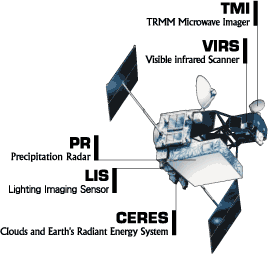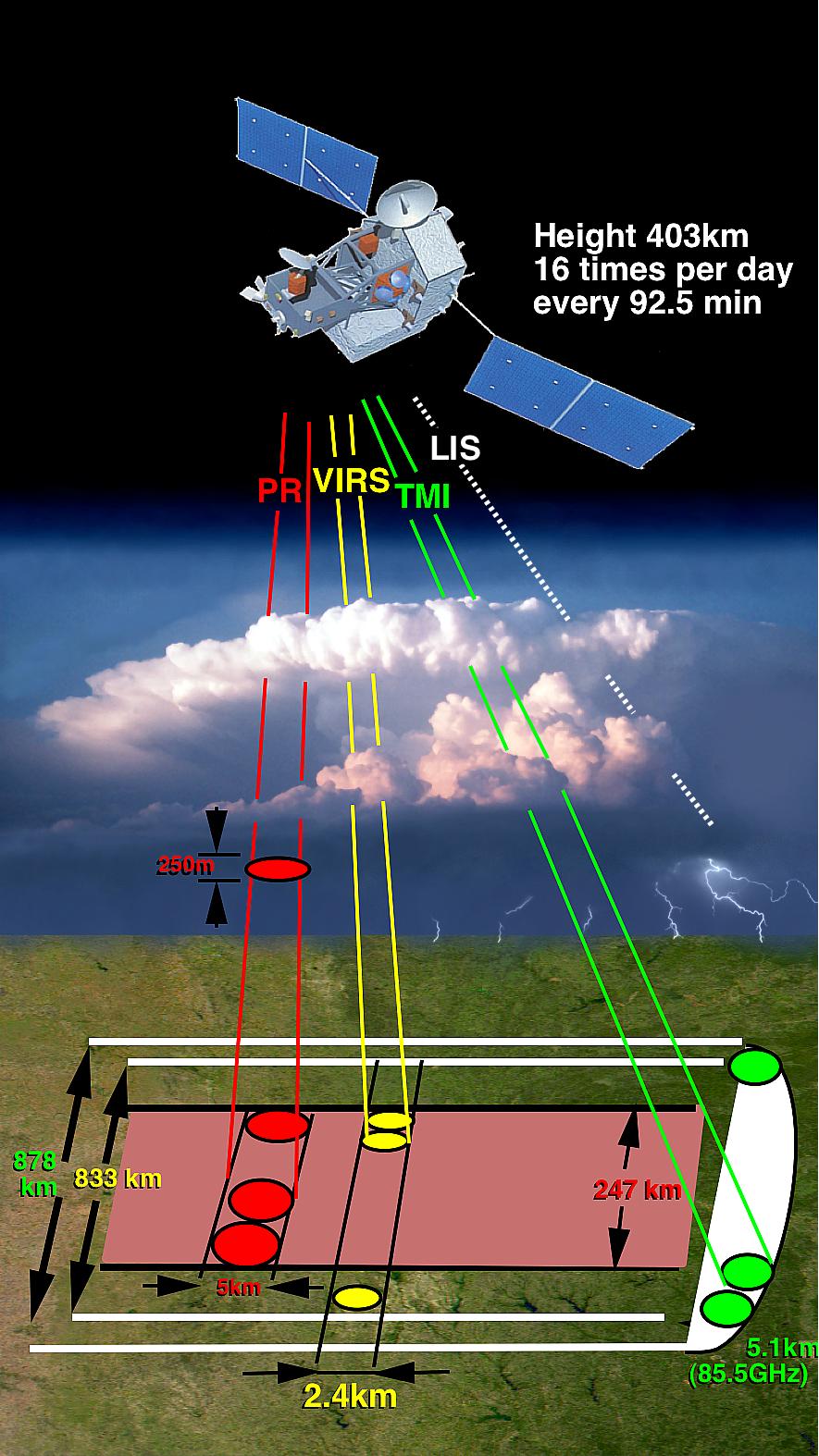Diagram of the TRMM Satellite and Instruments

Image Caption
Diagram of the TRMM satellite and instruments.
Content which is associated solely with the Tropical Rainfall Measuring Mission.


An explanation of what causes lightning and how TRMM is used to study the relationship between rainfall and lightning.